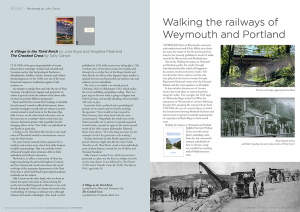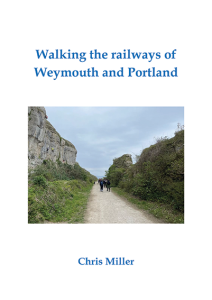A Village in the Third Reich by Julia Boyd and Angelika Patel and
The Crooked Cross by Sally Carson
Reviewed by John Davis

It is one of the great imponderables of recent history that a seemingly civilised and cultured mid-European society that had produced Beethoven, Mendelssohn, Schiller, Goethe, Einstein and Leibniz should degenerate in the 1930s into one of the most brutal and repressive totalitarian regimes of the modern era.
An attempt to explain how and why the rise of Nazi Germany was allowed to happen and perpetrate its crimes is given by both the authors of the above titles yet from an entirely different perspective.
Boyd and Patel have based their findings on detailed factual research rooted in official documents, letters, journals newspaper records and eye-witness accounts centred around a small town in the Bavarian Alps. Sally Carson, on the other hand, who spent time in the same area as a summer visitor at that time, has chosen a fictional narrative that quantifies the life-changing effects of the ‘New Order’ on individuals in one family in particular.
A Village in the Third Reich lifts the lid on the small town of Oberstdorf nestled in mountainous country near the Swiss border.
For years, history seemed to have passed it by as residents and tourists went about their daily business in idyllic surroundings. That was until the arrival of fascism brought about dramatic shifts in both individual and collective dynamics.
The book is, in effect, a microcosm of what was happening during the period throughout Germany and later Austria and reveals more about the actual workings of the serpentine departments of the Nazi Party than a whole shelf-load of generalised academic textbooks on the subject.
Sally Carson on the other hand, who was born in Surrey but spent some time in Dorset during her youth and travelled frequently to Bavaria to stay with friends during the 1930s, has chosen the novel as her methodology of relating an identical story although without the benefit of hindsight. (Her book was first published in 1933 while events were taking place.) The ‘crooked cross’ of the title is in fact the swastika and through the everyday lives of the Kluger family and their friends she tells us what happens when conflict is sparked between an all-powerful and ruthless state and ordinary private individuals.
The story is set within a six-month period, Christmas 1932 to Midsummer 1933, which makes the events unfolding compelling reading. There is a great urge to discover what is going to happen next while knowing, and actually dreading, what inevitably will come to pass.
It provides both a political and a psychological portrait of one nation and one family and begs the question: “How would we have reacted in Nazi Germany then when faced with the same circumstances?” Regretfully, the whole issue of the Nazis inexorable rise to power, so expertly unpeeled in both books, reminds us again of the much-quoted words of the 18th century philosopher Edmund Burke who told us, “The only thing necessary for the triumph of evil is for good men to do nothing.”
Readers interested in Julia Boyd’s approach to this period of history might also like her ‘sister’ book Travellers in the Third Reich, a look at how individuals, some of them famous, viewed the rise of Hitler and National Socialism.
Sally Carson’s Crooked Cross, which has also been presented as a play, was the first in a trilogy of novels on the same theme. It was followed by The Prisoner (1936) and A Traveller Came By (1938). She died in 1941, aged only 39.
A Village in the Third Reich
is published by Elliott and Thompson Ltd.
The Crooked Cross
is published by Persephone Books Ltd.
Walking the railways of Weymouth and Portland

Although born in Weymouth, university and employment took Chris Miller away from the town for much of his life but living there now, he has recently published a book of walks around the Weymoiuth and Portland area.
The book, Walking the railways of Weymouth and Portland, guides the reader through four illustrated walks which all happen to be, in part, on disused railway tracks. The text describes these railways and the role they played in the local economy through Weymouth Harbour’s trade with the Channel Islands and the stone quarries on Portland.
It also includes discussions of historic events that took place at various locations along the walks. For example, the 1645 siege of Melcombe Regis in the Civil War; the emergence of Weymouth as a resort following George III’s spending the summer there from 1789-1805; the use of convict labour to build the breakwaters forming Portland Harbour and various forts to protect it and the manufacture of torpedoes in Wyke Regis in both world wars.
Walking the railways of Weymouth and Portland (ISBN 978-9-69-759204-3) has over 80 colour plates, including some from the late nineteenth century, and details of how to obtain a copy are available by emailing: miller545@btinternet.com.



